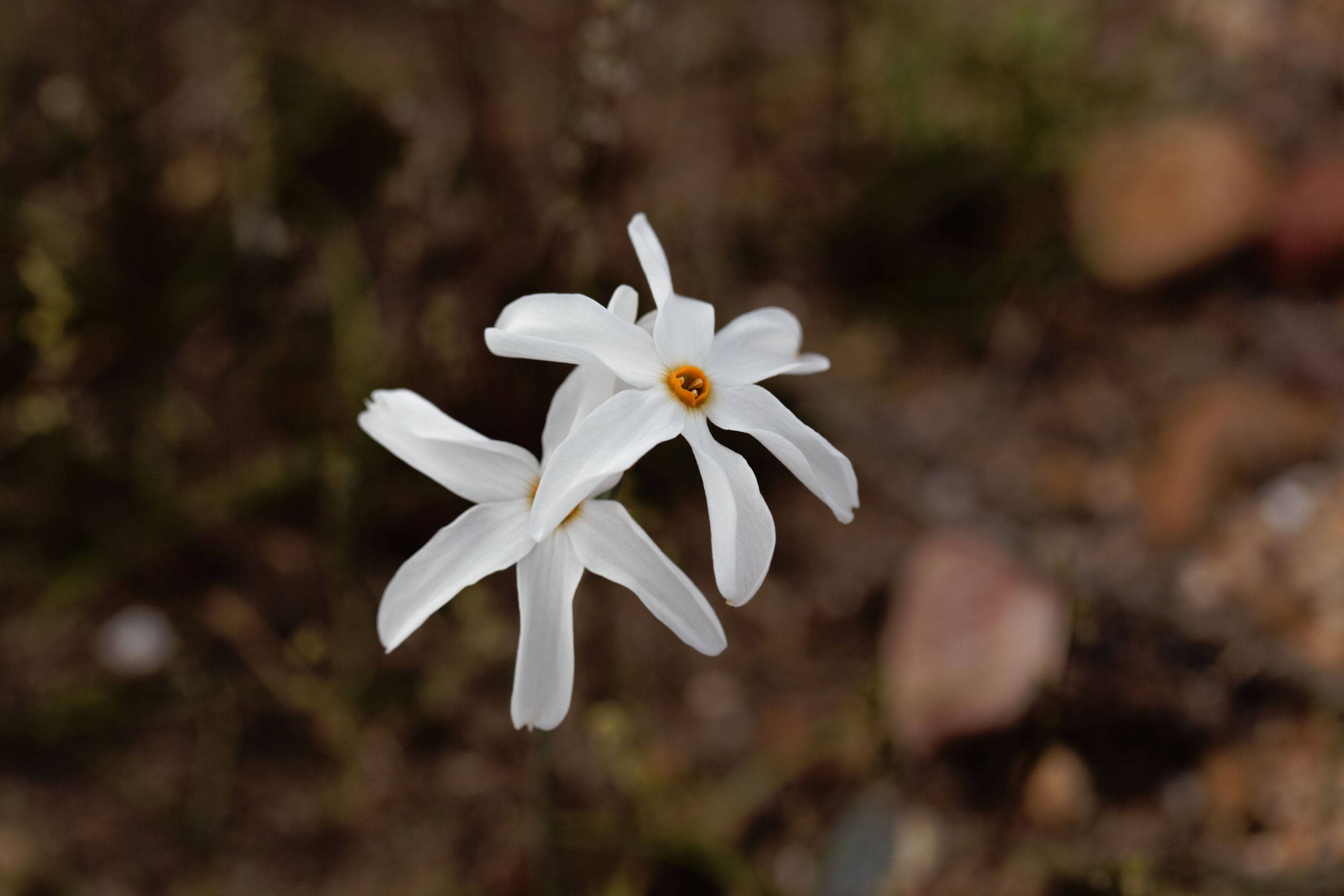Autumn narcissus
(Narcissus elegans)

Description
Narcissus elegans, commonly known as the cyclamen-flowered daffodil, is a species of bulbous perennial plant in the Amaryllidaceae family. This plant is native to the Mediterranean region, specifically to the Iberian Peninsula and northwestern Africa, where it grows in open woodlands and meadows. Narcissus elegans is a popular garden plant and has been widely cultivated for its striking, fragrant flowers. Description and Taxonomy Narcissus elegans is a herbaceous plant that grows from a bulb. The bulbs are ovoid, up to 5 cm in diameter, with a brownish outer layer and several fleshy scales. The leaves are narrow and strap-shaped, up to 25 cm long and 1 cm wide, and emerge from the base of the plant. The flower stalks are upright, up to 30 cm tall, and bear one or two flowers each. The flowers are usually pink or white, with six tepals (three petals and three sepals) that are reflexed, or curved backward. The flowers have a central trumpet-shaped corona, which is frilly and orange-red in color. Narcissus elegans blooms in early spring, usually in March or April. Narcissus elegans was first described by the Spanish botanist Antonio José Cavanilles in 1795. It is classified in the genus Narcissus, which includes over 50 species of bulbous plants, many of which are popular garden plants. Narcissus elegans is sometimes called the cyclamen-flowered daffodil because of the similarity between its reflexed petals and those of cyclamen (Cyclamen spp.). Cultivation and Uses Narcissus elegans is a popular garden plant because of its attractive flowers and sweet fragrance. It is hardy in USDA zones 8 to 10, and prefers well-drained soil and full sun to partial shade. The bulbs should be planted in the fall, at a depth of about 10 cm, and watered regularly until the foliage dies back in the summer. The bulbs can be left in the ground from year to year, or lifted and stored in a cool, dry place until the next planting season. In addition to its ornamental value, Narcissus elegans has a few other uses. The bulbs and leaves contain alkaloids that have been used in traditional medicine to treat a variety of ailments, including respiratory infections and joint pain. However, these alkaloids can be toxic if ingested in large amounts, and should be used with caution. Conservation Status Narcissus elegans is not considered a threatened species, but some populations have declined due to habitat loss and over-collecting for the horticultural trade. In Spain, where the species is most abundant, it is protected by law and harvesting or disturbing wild plants is prohibited. Conclusion Narcissus elegans is a beautiful and fragrant spring-blooming bulb that is easy to grow in the garden. Its reflexed petals and frilly corona make it a standout among other daffodils, and its historical use in traditional medicine adds to its intrigue. While it is not a threatened species, conservation efforts should be made to protect its natural habitats and ensure its continued survival in the wild.
Taxonomic tree:







